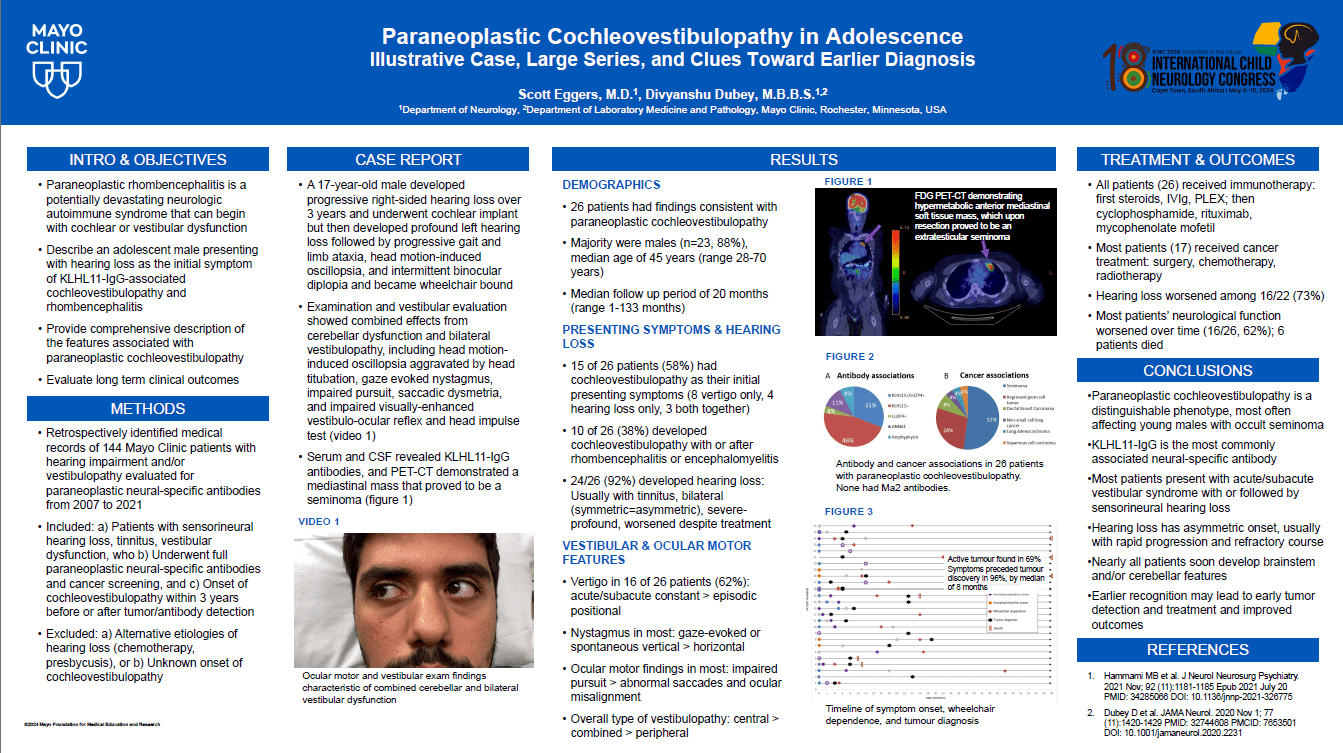Paraneoplastic Cochleovestibulopathy In Adolescence: Illustrative Case, Large Series, And Clues Toward Earlier Diagnosis
Introduction: Paraneoplastic rhombencephalitis is a potentially devastating neurologic autoimmune syndrome that can begin with cochlear or vestibular dysfunction.
Methods: We describe an adolescent male with initially isolated hearing loss from KLHL11-IgG-associated autoimmunity. We review our case series of paraneoplastic cochleovestibulopathy patients 2007-2021 to highlight this condition of predominantly young males, emphasizing symptom and examination clues to aid earlier diagnosis and treatment.
Results: A 17-year-old male developed progressive right-sided hearing loss over 3 years and underwent cochlear implant but then developed profound left hearing loss followed by slowly progressive gait and limb ataxia, head motion-induced oscillopsia, and intermittent binocular diplopia and became wheelchair bound. Examination and vestibular evaluation showed combined effects from cerebellar dysfunction and bilateral vestibulopathy, including head motion-induced oscillopsia aggravated by head titubation, gaze evoked nystagmus, impaired pursuit, saccadic dysmetria, and impaired visually-enhanced vestibulo-ocular reflex and head impulse test. Serum and CSF revealed KLHL11-IgG antibodies. PET-CT demonstrated a mediastinal mass (seminoma). Retrospective chart review identified 26 patients (23 men, median age 45) with paraneoplastic cochleovestibulopathy presenting with auditory or vestibular symptoms before rhombencephalitis/encephalomyelitis. Biomarkers included KLHL11-IgG (n=20, with coexisting LUZP4-IgG n=8) or other autoantibodies. Active tumour was found in 18 patients, most commonly seminoma (n=13), with 6 others having regressed germ cell tumour.
Conclusions: Paraneoplastic cochleovestibulopathy produces progressive hearing loss and/or vertigo often months before brainstem/cerebellar manifestations. KLHL11-IgG and seminoma are the most common serological and cancer associations, typically affecting young or middle-aged males. Recognizing this phenotype may allow earlier diagnosis and treatment of paraneoplastic autoimmunity and cancer.
Scott Eggers
Mayo Clinic
United States
Divyanshu Dubey
Mayo Clinic
United States
